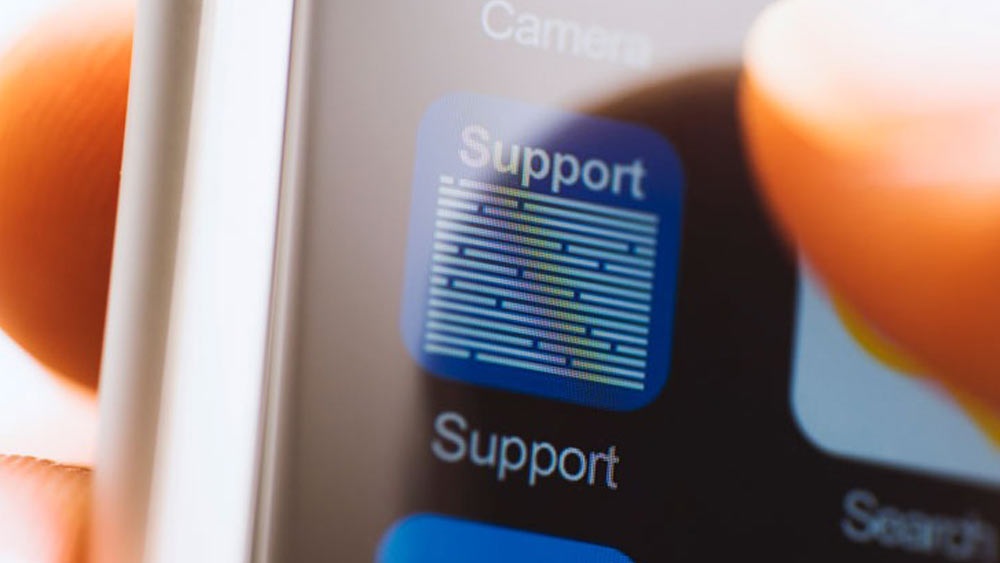Do you ever groan when you need to call a company’s technical support?
It’s no surprise, really. We’ve all had those less-than-stellar experiences along the way. Sitting on hold for long periods of time; trying to communicate your problems over the phone; fielding obvious solutions you’ve already tried; and sometimes hanging up no closer to a solution than when you started.
Sound familiar?
Obviously, you don’t want your customers to feel like that about your technical support. But what can you do to make it better?
How about offering superior technical support within your mobile app? You don’t need a whole new application, and you don’t need to send customers elsewhere, either. If you already have a mobile app in your customers’ hands, use it!
And if you don’t have a mobile app in place just yet, that’s okay, too. You can design your app from day one to perform double duty – providing both the valuable product features they want as well as the technical support capabilities they’ll need.
So what exactly should go into your app? I’m not talking about simply adding a “Call Now” button that dials your firm’s tech support line and drops users into an existing queue. Frankly, that’s what you’ll find in many “tech support” areas of mobile apps, but it’s hardly going to wow anyone.
I’m talking about functionality that can truly delight your customers. Not an easy task, but there is a way to achieve it: go above and beyond what your customers expect.
In this post, we’ll look at some of these “above and beyond” features. Consider including some or all of these in your mobile app.
Achieving Superior Technical Support Directly through a Mobile App
Direct support is when customers are directly connected to your technical support staff. A mobile app can accomplish this in new and powerful ways. Here are some:
- Provide multiple contact options. Too many technical support organizations force you to communicate on their terms, rather than yours. This starts the interaction on the wrong foot, so to speak. The truth is that different customers prefer to communicate in different ways. Not only that, but there are also situational factors to consider. Luckily, mobile devices are uniquely positioned to handle multiple contact options. Some of these include:
- Standard call buttons (connecting to tech support without having to look up or dial numbers).
- Open chat sessions with tech support staff.
- Video chat. Although rarely used, it offers a more personal – and effective – means of communication.
- Callback requests (when customers can’t talk openly or have bad connections). For bonus points, allow them to specify the time they want you to call them back.
- Email for customers who prefer less personal communications or don’t want to be involved in an open-ended conversation. Also useful for those wanting to provide more detail up front regarding their situation.
- Text messaging offers a mode “in between” chat rooms and email. This can be effective for longer interactions taking place in short increments.
- Mobile Diagnostics. A mobile app can collect data from your product and attempt to diagnose any problems before a call to tech support is even placed. In some cases, this might require adapting your product to allow scanning from a mobile device, but the benefits are worth considering. Even if a mobile diagnostic doesn’t solve the problem, it could provide valuable info for your tech support staff.
- Problem Logging and Response. Sometimes customers just want to log their problems, concerns and suggestions and aren’t expecting an immediate response. A mobile app can provide a quick and easy way for users to do this. The key to delighting customers, however, is to show users that you’re not just logging, you’re listening. You can prove it with instant acknowledgements, updates, and the all-important follow-up. You can use ZenDesk and Freshdesk’s Mobihelp mobile SDKs to incorporate this kind of support ticketing within your app.
- Addressing Customer Concerns. Logging a problem is one thing, but solving it is where you’ll gain real satisfaction. Take your customer feedback seriously when prioritizing your product backlog. Remember that it’s easier to maintain existing customers than it is to obtain new ones – and not solving customer problems is the quickest way to lose them. Your mobile app can alert customers – and even send push notifications – when issues that relate to them are solved.
Mobile Apps Provide Indirect Technical Support, Too
Excellent technical support requires more than one-on-one connections with your staff. The best tech support provides indirect service, too. Some of the features to include in your mobile app are:
- A Good Knowledgebase. Many companies simply send you searching through their forums, sifting through inconsistent advice from other customers. Inputs from actual tech support staff are often few and far between. By offering a true knowledgebase presented by your expert staff, you’ll avoid those frustrations and exceed expectations. There’s definitely value in customer forums (see next bullet point), but you need to own everything in your knowledgebase. The benefit is when you provide all the information customers need within your app, they’ll use it instead of looking elsewhere. The ZenDesk and Mobihelp SDKs can enable these interactive knowledgebase structures for your app.
- Engage Your Customers With Each Other. Often your customers will find their own creative ways to solve problems. Getting them to communicate with each other is one strategy to take advantage of this. Social media groups and guided forums can be implemented inside your app to give them an idea sharing platform. While this is considered an indirect method, your tech support team should be heavily involved here – the more “ownership” they take of the conversations, the more valuable they will be.
- Video Tutorials and Troubleshooting. Offering video tutorials on how to use your product effectively will eliminate some customer problems and reduce service calls. Your mobile app can suggest and queue specific topics, based on your customer data. Just addressing common issues and troubleshooting tips clearly can achieve big savings in your technical support costs.
Ready to Offer Mobile Tech Support?
As you can see from the ideas here, enabling tech support within an app can be a complex project. But that doesn’t mean it needs to take a year or more to launch it. Learn how Ascendle can build tech support features like these quickly in our free, exclusive presentation, 3 Secrets to Delivering a Commercial Mobile App in 4 Months.






